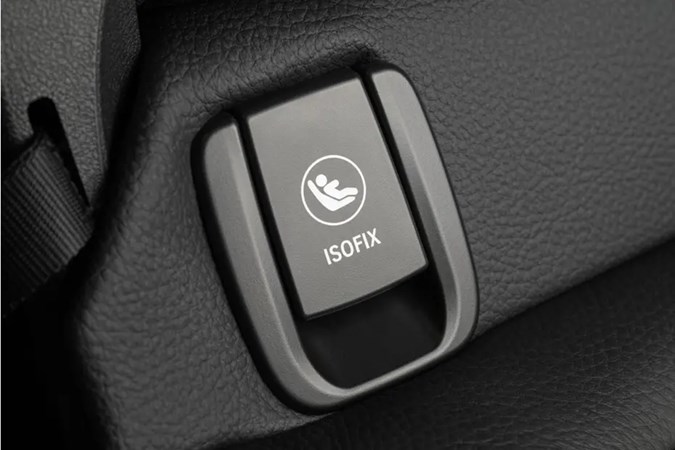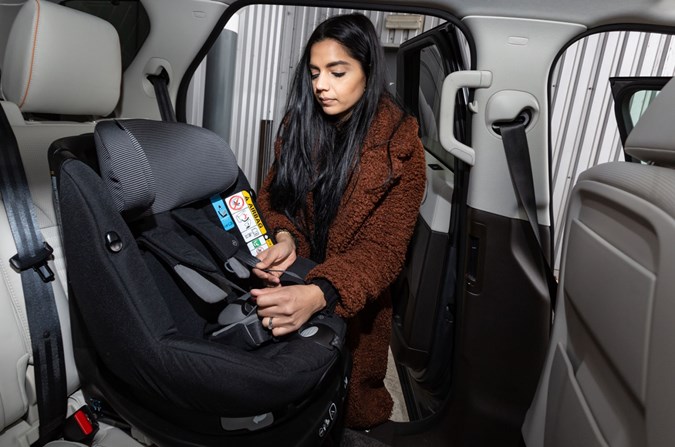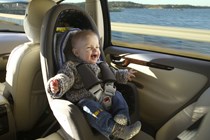It can take days, even weeks of research to find the best car seat for you and your children but, perhaps even more importantly, you need to be able to install the seat in your car properly. There was a time when it was a real struggle, using the seat belt to secure the kids’ chair in place. The belt could easily get tangled up, and you’d almost certainly miss one of the slots it had to pass through. Fortunately, there is a solution – Isofix.
Isofix makes installing a child seat much easier. Its been around since the early 2000s and is now found in every family car on the market and many others besides. Not only are Isofix – sometimes styled ISOfix – child seat mounting points easier to use, they’re also much safer if you’re unfortunate enough to have a crash.
In this guide, we’re going to explain everything you need to know about Isofix child seat mounts, including how they work and how to use them. We’ll also go over the current rules on carrying children in a car.
What are the UK rules for carrying children in cars?
Most parents are au fait with the raft of UK laws on using car seats. Beyond ‘it’s the law to wear a seat belt’, babies (aged 0-3 years) and small children (aged 3-12 years, or until they’re over 135cm tall) are required to be seated in a suitably protected restraint.
It’s also illegal to install a rear-facing child seat on the front passenger seat of a car unless the airbag has been turned off (many cars have some means of letting you do that).

What is Isofix and how does it work?
In years gone by, it was very easy to incorrectly install a child seat, securing it into the car with just the seat belt. It wasn’t the safest solution and could be extremely time consuming, as well. Isofix solves both those problems. It’s much quicker and easier to use and, once installed, the child seat effectively becomes part of the car rather than an object within it, a significant boost to safety.
There are two sides to the Isofix equation: the mounting points and the child seat. The mounts are simple metal loops that look like three sides of a square and they’re welded onto the car’s floor or the seat frame. That makes them an integral part of the car’s structure. Then there’s the child seat, which has two clasps on the lower back corners that automatically lock when pushed onto the mounts, effectively making the seat part of the car’s structure, as well.
If you’re looking for a child seat for a new arrival and are unsure about how to wade through the myriad options, check out Parkers’ guide on how to choose a car baby seat.
Where do I find my car’s Isofix mounts?
Isofix mounting points are provided on the outer rear seats of just about every car that has them. Some cars have three sets of mounts, including the Peugeot 5008 which has a trio of individual back seats. There are also some seven-seaters that have Isofix mounts in the third row, such as the Volkswagen Touran. And some cars have mounts on the front passenger seat, the Audi Q5 among them.
There are even some two-seater cars that have Isofix on the passenger seat including the Porsche 7818 Boxster and Mazda MX-5.
In many cars, the Isofix mounts are concealed behind a cover bearing the symbol pictured below. It will be removable, flip up or push in. Alternatively, the mounts are hidden in the gap between the seat squab and back cushions. There may be a label indicating where they are.

How do I install an Isofix child seat?
First thing to do is locate the Isofix mounting points you’re going to install the child seat on. Next, you need to manoeuvre your child seat into the car. Once you’ve got the seat inside and lined up, push it onto the mounts until the clasps lock on. Give the seat a pull and push to make sure it’s secure.
If the child seat extends beyond the base of the car’s seat, you need to extend the leg down to the floor then lock it into place. Finally, if there’s a top tether, secure it to the mounting point that you’ll find on the back of the car seat, or on the parcel shelf. Again, make sure the child seat is fully secure.
Isofix child seats can be very big and bulky so it’s sensible to do a trial installation in your car before you commit to buying one. Similarly, if you switch to a new car, make sure your existing child seat fits before handing any money over. They can also be very heavy and installation often requires contorting yourself into an odd position, so make sure you’re comfortable lifting the seat up, particularly if you have a tall SUV.
Fortunately, there are some Isofix child seats with a removable base that cuts down bulk and weight. You install the base onto the mounts first, then clip the seat in place on top. Also make sure you’re familiar with the latest advice on how long little ones can be in a car seat before travelling.

What cars have Isofix?
You’ll find Isofix mounting points in pretty much every car with a back seat that’s been sold in the UK since the 2010s when they became a legal requirement, plus some older cars. Right now, they’re fitted to cars as diverse as the Toyota Aygo X and Porsche 911. If you want to know if a car has Isofix, an online search should provide the answer. Or look for the symbol pictured above on the back seat.
Looking for more jargon-busting motoring meanings? Head over to our Parkers Car Glossary page and take a look at our other definitions.
Just so you know, we may receive a commission or other compensation from the links on this website - read why you should trust us.










